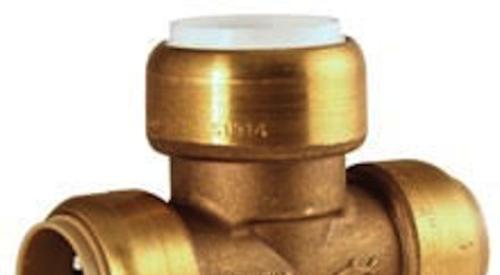If you want to build kitchens and baths that are beautiful inside and out, you might want to make some upgrades where they can't be seen — the plumbing system.
Technologies like home run plumbing, air admittance valves (AAVs), tankless water heaters, low-flow fixtures and gray water reuse piping provide homeowners easier long-term maintenance and lower utility bills. You benefit from easier, speedier construction.
Home Run PlumbingHome run plumbing systems allow you to shut off water to a single fixture through a central manifold, so if there's a leak in one line, you don't have to turn the water off to the whole house to find it.
The system includes the manifold to deliver hot and cold water, which is fed through flexible cross-linked polyethylene plumbing (PEX) supply lines.
Flexible PEX piping is a real plus when installing water lines. The piping rolls off a spool and can be easily threaded around structural members and through walls and crawl spaces. That means a lot less cutting and welding or gluing for the plumber.
Since PEX requires few (if any) fittings, there will be fewer leaks. PEX also expands and contracts more than other types of pipe, so it's less likely to burst if the pipes freeze.
When installing plumbing manifolds, mount them in a convenient, accessible location such as on a basement wall or in a service closet near the domestic water heater.
Easy AdmittanceAAVs simplify the builder's job by eliminating the need for conventional pipe venting.
AAVs operate with the discharge of wastewater, which releases a vacuum and allows air to enter the plumbing for proper drainage. Otherwise, the valve remains closed, preventing the escape of sewer gas and maintaining the trap seal.
AAVs are also long-lasting. The American Society of Sanitary Engineers (ASSE) requires valves to open and close at least 500,000 times with no emanation of sewer gas.
AAVs have been accepted by major model building and plumbing codes, including IRC 2003 for single- or multi-family residential construction, and by the ASSE. However, some local authorities are still unfamiliar with the technology or reluctant to accept it. If that's your situation, you may need to present extra data to educate your code official.
Tankless Water HeatersWidely used in Europe and Japan, tankless water heaters offer an endless supply of hot water and lower water heating bills. These units are so small they can be installed in a closet, under a sink, on a wall or, in some cases, on the exterior of the home.
Manufacturers say their tankless water heaters can shave 10 to 20 percent off water heating bills by eliminating standby losses — the energy lost from continually warming water that sits in the tank. For maximum energy efficiency, tankless can also be used to boost a solar hot water system.
Available in electric, gas and propane, tankless water heaters can meet all of a home's hot water needs. They can also provide instant hot water to specific fixtures if you install point-of-use heaters, which can be located under a sink. This application is gaining popularity in bathrooms with double sinks, providing hot water to both faucets from under the vanity.
Go With the FlowWhen they were introduced, low-flow toilets generated complaints about trouble clearing the bowl and frequent clogging. If you've rejected many water-saving fixtures out of hand, it's worth taking a second look. Many low-flow toilets, faucet aerators and showerheads have been developed with advanced technologies and designs to improve performance.
One option to consider is laminar flow controls, which make lower water flow feel more vigorous. Manufacturers claim that laminar flow controls can reduce water use by as much as 90 percent compared to conventional fixtures by delivering a precise amount of water to faucets, showerheads, and hoses. Like low-flow fixtures, laminar controls are simply screwed into place.
Also check with your local water authority, which may offer rebates for installing low-flow fixtures and other water efficiency measures.
Putting Gray Water to WorkFor the homeowner, gray water reuse can significantly lower bills for outdoor water use. For the builder, it could mean the ability to build on land that is unsuitable for conventional water treatment. It pays to investigate your options.
With some very simple piping alterations, most new homes can be equipped to allow a future gray water system retrofit. This requires only that gray water drains be kept separate from black.
Gray water is wastewater from bathtubs, shower drains, bathroom sinks, washing machines and dishwashers, accounting for 60 percent of outflow from homes. It contains few or no pathogens and 90 percent less nitrogen than toilet water or other "blackwater." Therefore, it does not require the same treatment process. By designing plumbing systems that separate the two, gray water can be recycled for irrigation, toilets and exterior washing.
If the home is under construction, this isn't too difficult. A 2 1/2-bathroom home would require less than half a day of a plumber's time and some drain pipe material. Depending on location, this modification could be in the $350–$500 range.
| Author Information |
| Scott T. Shepherd writes about better building practices on behalf of PATH. Scott is an associate with D&R International, an environmental consulting firm in Maryland. |








